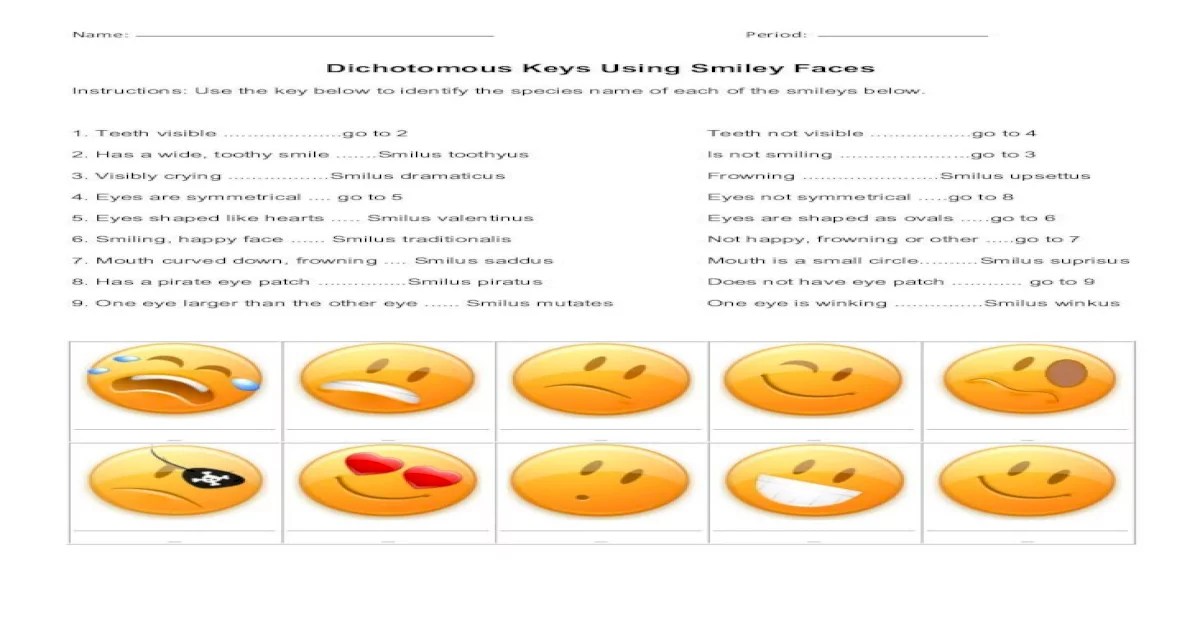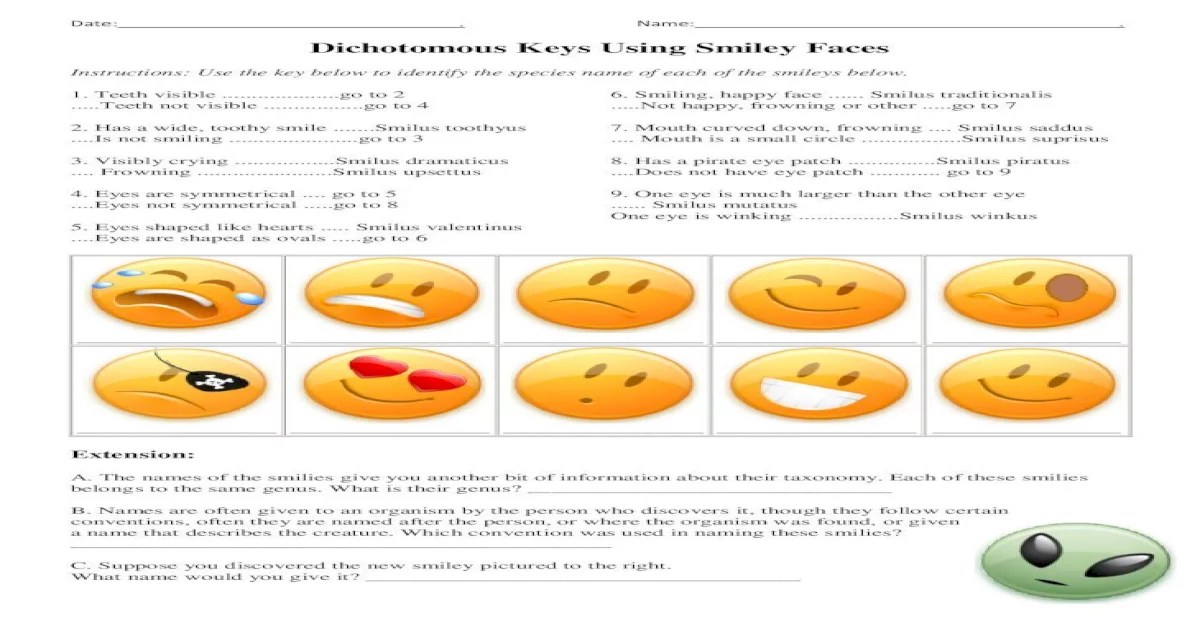Dichotomous keys using smiley faces answer key – Embark on an illuminating journey into the realm of dichotomous keys using smiley faces, an innovative approach to classification that simplifies complex concepts and sparks curiosity. This guide delves into the purpose, advantages, and variations of these keys, exploring their educational benefits and real-world applications.
Dichotomous keys empower individuals to identify and categorize objects, organisms, or ideas through a series of binary choices represented by cheerful smiley faces. These keys enhance learning experiences, foster critical thinking, and facilitate effective communication across diverse fields.
Dichotomous Keys

Dichotomous keys are a type of identification tool that uses a series of paired statements to help users identify a particular organism or object. Each pair of statements presents two contrasting characteristics, and the user selects the statement that best describes the organism or object.
The user then follows the arrow associated with the selected statement to the next pair of statements. This process continues until the organism or object is identified.
Dichotomous keys are a valuable tool for biologists and other scientists because they provide a systematic and efficient way to identify organisms. They are also relatively easy to use, even for beginners.
Advantages of Using Dichotomous Keys
- They are easy to use, even for beginners.
- They are systematic and efficient.
- They can be used to identify a wide variety of organisms.
- They are a valuable tool for biologists and other scientists.
Smiley Faces Answer Key: Dichotomous Keys Using Smiley Faces Answer Key

Smiley faces are often used in dichotomous keys to make them more user-friendly. Each smiley face represents a different characteristic of the organism or object being identified. For example, a smiley face with a big smile might represent a characteristic that is present in the organism or object, while a smiley face with a frown might represent a characteristic that is absent.
Using smiley faces in dichotomous keys can make them more fun and engaging for users, especially for children. It can also help users to better visualize the characteristics of the organism or object being identified.
Advantages of Using Smiley Faces in Dichotomous Keys, Dichotomous keys using smiley faces answer key
- They make dichotomous keys more user-friendly.
- They can make dichotomous keys more fun and engaging.
- They can help users to better visualize the characteristics of the organism or object being identified.
Creating Dichotomous Keys with Smiley Faces

To create a dichotomous key with smiley faces, you will need to first identify the characteristics that you will use to identify the organism or object. Once you have identified the characteristics, you will need to create a series of paired statements that contrast the characteristics.
Each pair of statements should be followed by an arrow that leads to the next pair of statements.
Here is an example of a dichotomous key with smiley faces that can be used to identify different types of trees:
| Characteristic | Yes | No |
|---|---|---|
| Does the tree have needles? |  |
 |
| Does the tree have broad leaves? |  |
 |
| Does the tree have cones? |  |
 |
| Does the tree have flowers? |  |
 |
Using Dichotomous Keys with Smiley Faces
To use a dichotomous key with smiley faces, you will need to start at the top of the key and follow the arrows that correspond to the characteristics of the organism or object you are trying to identify. You will continue to follow the arrows until you reach a statement that identifies the organism or object.
Here is an example of how to use the dichotomous key from above to identify a tree:
- Start at the top of the key and read the first pair of statements.
- Does the tree have needles? No.
- Follow the arrow that corresponds to “No” to the next pair of statements.
- Does the tree have broad leaves? Yes.
- Follow the arrow that corresponds to “Yes” to the next pair of statements.
- Does the tree have cones? No.
- Follow the arrow that corresponds to “No” to the next pair of statements.
- Does the tree have flowers? Yes.
- The tree is a flowering tree.
Helpful Answers
What is the purpose of a dichotomous key?
Dichotomous keys provide a systematic approach to identifying and classifying objects or concepts by presenting a series of binary choices.
How do smiley faces enhance dichotomous keys?
Smiley faces simplify the key, making it more accessible and engaging, particularly for younger learners or those with cognitive challenges.
Can dichotomous keys with smiley faces be used in different settings?
Yes, these keys find applications in various fields, including biology, ecology, and even art appreciation.


